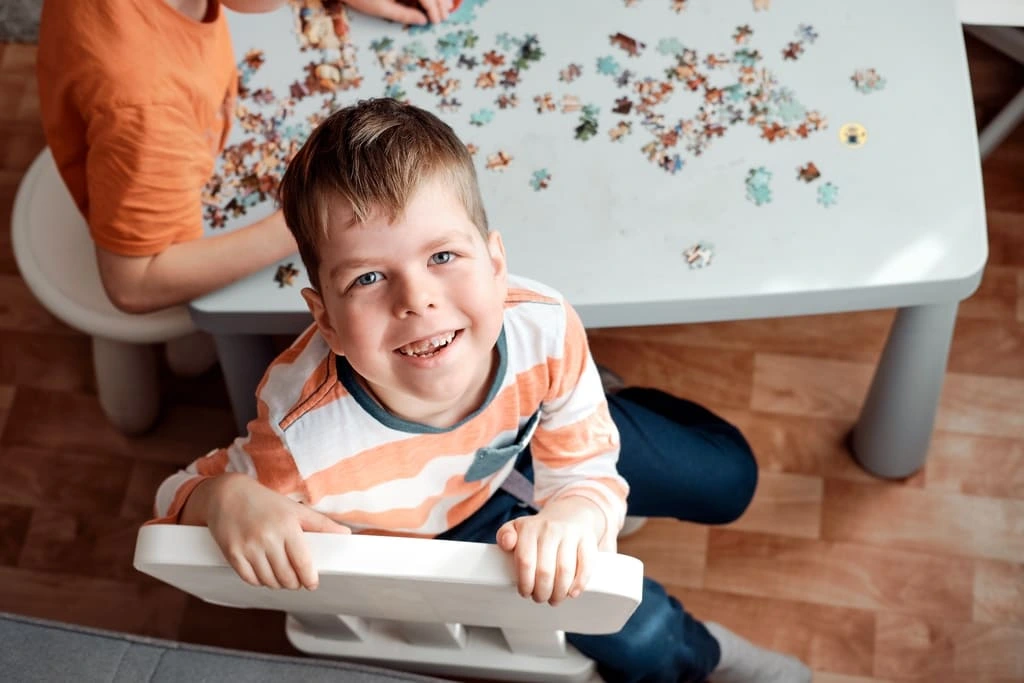Selective Mutism Meaning
Selective mutism is a complex anxiety disorder characterised by an individual’s consistent inability to speak in specific social situations despite having the ability to communicate in other settings. Often beginning in childhood, selective mutism is closely linked to social anxiety disorder, where intense fear and anxiety interfere with verbal expression. Individuals with selective mutism may experience overwhelming discomfort in situations that demand verbal interaction, such as school or public gatherings. We can differentiate selective mutism from shyness, as the former is a more severe and pervasive condition impacting daily functioning. Since it is very rare and under-researched, selective mutism can be mistaken for other mental health challenges or challenges affecting communication skills, such as social anxiety disorder, speech and language disorder and learning disabilities. While the exact cause of selective mutism remains unclear, it is believed to stem from a combination of genetic, environmental, and developmental factors.
Identifying and treating selective mutism typically requires the expertise of a mental health professional, such as a psychologist or psychiatrist. Early intervention is essential, especially in childhood, as untreated selective mutism can persist into adulthood, causing challenges in academic, social, and occupational development. Interventions may involve:
- Behavioural therapies
- Cognitive-behavioural therapy and techniques
It’s important to note that adults can develop selective mutism, often as a continuation of childhood anxiety or as a result of new stressors.
Situational Mutism
Selective mutism is also known as situational mutism, where individuals may find it challenging to verbalise their thoughts, feelings, or needs in specific contexts in certain social situations that trigger extreme social anxiety. The selective nature of mutism is a key feature, as these individuals may be fully capable of expressing themselves in familiar environments but struggle when faced with specific triggers that evoke anxiety.
Situational mutism’s root cause is social anxiety, wherein the fear of negative judgment, embarrassment, or criticism inhibits verbal communication. This anxiety can be overwhelming, leading individuals to retreat into silence as a coping mechanism. Treatment for situational mutism often involves a multidisciplinary approach, incorporating behavioural therapy, coping strategies, and social skills training strategies.
When Selective Mutism Usually Becomes Noticeable
Selective mutism typically becomes noticeable in early childhood, often around the ages of 2 to 5 years old. During this developmental stage, children with selective mutism cope with extreme shyness, reluctance to speak in social situations, and a noticeable inability to communicate verbally, especially in certain situations. In most cases, selective mutism appears to be more prevalent in young girls. This condition can be challenging for parents and educators, as children may appear outgoing and talkative in familiar environments, such as home, but become mute or minimally communicative in unfamiliar settings.
Selective mutism affects not only the individuals who experience it but also those in their social circles. Teachers, peers, and family members may find it challenging to understand why a child or adult with selective mutism remains silent in certain situations. Selective mutism is not a choice or a behavioural problem but rather a complex anxiety disorder. At Leaf Complex Care, addressing the needs of children with selective mutism involves creating a supportive and understanding environment that encourages gradual exposure to social situations, promoting their self-confidence and communication skills over time.
Early Recognition Can Lead to More Effective Intervention
As children grow older, if selective mutism symptoms go untreated, it may continue into adolescence and then into adulthood. In some cases, adults with selective mutism may continue to struggle with communication in specific social contexts. The underlying causes for a child to develop selective mutism often involve a combination of genetic predisposition, environmental factors, and anxiety disorders such as social phobia.

Early intervention makes children more likely to develop practical communication skills, reduce language difficulties and social anxiety, and participate more fully in social and academic settings. Moreover, early recognition of selective mutism facilitates a humanised approach to treatment that considers the child’s overall well-being. Recognising the signs of selective mutism at an early age allows for timely intervention, which can significantly improve outcomes for the child. Early recognition also enables clinicians and parents to collaborate in creating a supportive environment that addresses the unique needs of children with selective mutism.
Interventions such as gradual exposure therapy, speech therapy, social skills training, and cognitive-behavioural techniques can be tailored to the individual child’s needs, helping them build confidence and overcome the challenges associated with selective mutism. Beyond addressing the immediate communication challenges, early intervention allows professionals to identify and address any underlying emotional or developmental factors contributing to selective mutism. By understanding the root causes and individual triggers, therapists and clinicians can design interventions focusing on improving verbal communication and targeting the child’s emotional and social development.
Common Signs and Behaviours
The primary sign of selective mutism lies in the difference in a child’s ability to engage with different individuals and in different social settings. When communicating outside their comfort zone, children often showcase a sudden stillness and anxiety.
Signs of selective mutism include:
- Avoiding eye contact
- Withdrawing or being stubborn
- Avoiding public speaking
- Seeming anxious and nervous
Despite their challenges in verbal communication, many children exhibit heightened:
- Non-verbal communication skills when expressing themselves through gestures, facial expressions, and body language
- Observation skills and empathy towards others, making them perceptive and considerate friends
- Creativity and finding alternative ways to convey their thoughts and emotions
Older children with selective mutism may have extreme shyness and social anxiety, often leading to behaviours like avoiding eye contact, withdrawing from social interactions, and exhibiting physical signs of discomfort such as fidgeting or trembling. It typically manifests in childhood, and individuals with selective mutism may struggle to initiate or respond to verbal communication, even with familiar individuals like family members or close friends.
Another common behaviour seen in individuals with selective mutism is the reliance on nonverbal communication. To cope with their difficulty in verbal expression, individuals with selective mutism often resort to gestures, nods, or written communication to convey their thoughts and needs. This nonverbal communication may become a prominent feature of their interactions, as it serves as a coping mechanism to navigate the challenges associated with the anxiety of speaking.
Confidence levels also play a role in how selective mutism manifests. More self-assured children might resort to non-verbal communication through gestures like nodding for “yes” or shaking their head for “no”. However, children with low self-esteem tend to avoid all forms of communication—spoken, written, or gestured. The challenge to communicate thoughts may lead some children to respond with a few words or speak through whispers.
Difference Between Selective Mutism from Shyness


Selective mutism and shyness share a continuum but diverge in their manifestations. While shyness implies difficulty in engaging socially, shy children can typically respond with a few words when asked questions, even though they might be anxious. In contrast, selective mutism is a mental health condition and includes a more profound challenge, as individuals find themselves unable to speak in particular scenarios or with specific individuals, particularly in school settings.
Emotional and Social Impact
The emotional toll encompasses feelings of isolation, low self-esteem, and a sense of being misunderstood by peers and adults. Socially, selective mutism can create challenges in developing essential interpersonal skills, affecting the ability to form connections and delaying academic and professional progress. The diversity of experiences associated with this condition underscores the importance of early intervention and comprehensive support systems to help individuals navigate the emotional and social aspects, fostering a more inclusive and understanding environment for children and adults living with selective mutism.
The Link with Anxiety
Children experiencing selective mutism often feel overwhelming anxiety, particularly in situations that involve unfamiliar people or social scrutiny. The fear of negative evaluation, embarrassment, or judgment can paralyse individuals, leading to a consistent silence in specific social contexts. Anxiety becomes a barrier to verbal expression, as the fear of speaking in these situations triggers a physiological stress response, making it difficult for the child to overcome the inhibition and communicate verbally.
The chronic nature of selective mutism can contribute to long-term anxiety challenges and social difficulties. The fear of speaking can lead to avoidance behaviours, further limiting social interactions and deepening the anxiety surrounding communication. As individuals experiencing selective mutism grow older, untreated anxiety can have a lasting impact on their mental health and overall well-being.
Can You Have Selective Mutism as an Adult?
Yes, individuals can experience selective mutism as adults, although it is often a continuation from childhood. The causes are complex and may involve genetic, environmental, and social factors, and adult-onset selective mutism may significantly impact daily functioning, relationships, and work.
Read more about Selective Mutism in Adults.
Example of Selective Mutism in Adults
Selective mutism in adults can manifest in various scenarios, impacting daily functioning and social interactions.
1. Workplace: In the workplace, an adult with selective mutism may experience challenges speaking up during meetings, presentations, or team discussions, hindering professional growth and collaboration.
2. Education: Adults may find it challenging to participate in class discussions or ask questions in educational settings, limiting their academic engagement.
3. Social situations: Social environments, such as parties or gatherings, might trigger selective mutism, leading the person to withdraw from conversations.
4. Healthcare: Healthcare settings may present challenges, and adults with selective mutism may find it difficult to communicate their symptoms or concerns to medical professionals.
These real-life examples highlight the diverse ways selective mutism can affect adults across various aspects of their lives.
Professional Support with Leaf Complex Care
To enable individuals to live on their own terms, our mission is to understand and accept one’s personal needs and aspirations. Leaf Complex Care offers tailored and expert professional support regarding the challenges associated with selective mutism. Through humanised approaches, our team supports individuals experiencing selective mutism to overcome communication barriers and thrive in their community by becoming more engaged in social events and fulfilling social life.
Through targeted behavioural strategies, anxiety management and work with our speech and language therapists, our team is committed to developing communication skills and improving the overall well-being of the individuals we support.
Do you need expert care and better solutions for your loved one in the comfort of their own home? Contact us today, and let’s connect.
Our offices are in Bristol, Slough, Birmingham, and Somerset, and we deliver our services across the UK.







